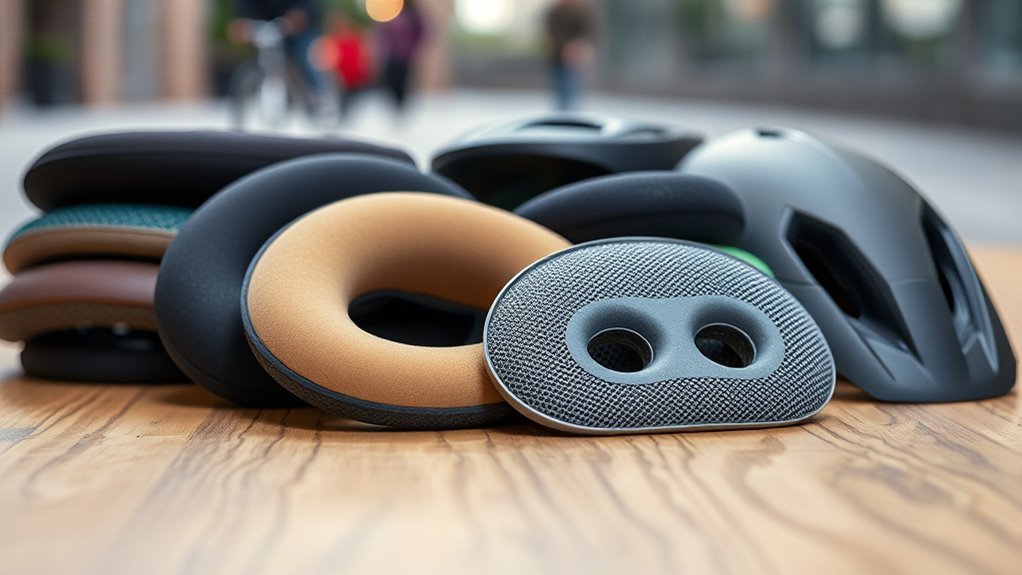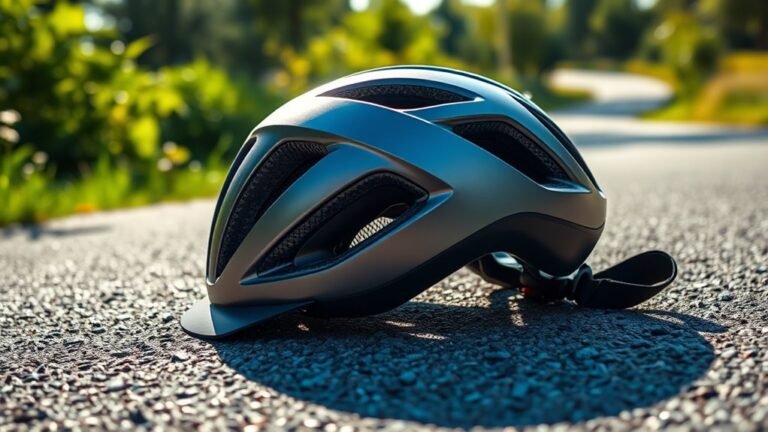Helmet Padding Options for E-Bike Riders
When choosing helmet padding for e-bike riding, prioritize materials like EPS or EPP foams for impact absorption and comfort. Customizable options allow for a tailored fit that minimizes movement and enhances safety. Look for moisture-wicking fabrics to regulate temperature and keep you comfortable during longer rides. A thick padding strikes a balance between fit and comfort. For a deeper understanding of how to maintain and care for your helmet padding, you’ll find important insights ahead.
Understanding the Importance of Helmet Padding
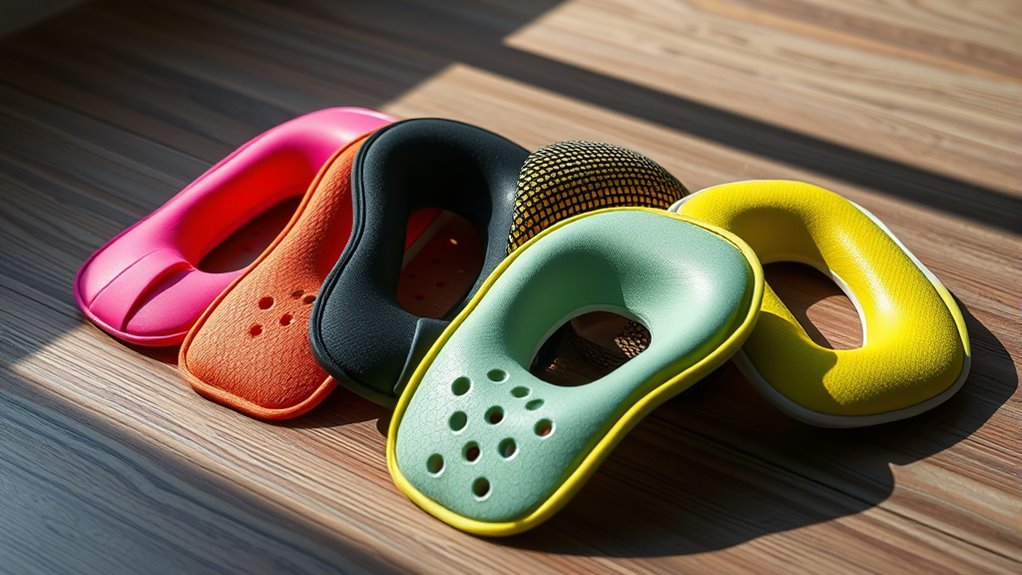
When it comes to e-bike safety, helmet padding plays an essential role in protecting your head during rides. Quality padding not only absorbs impact but also enhances comfort, allowing you to enjoy the freedom of riding without distraction. Proper helmet safety hinges on the right fit, and well-designed padding guarantees a snug yet comfortable experience. When you’re speeding down the road, a secure helmet with adequate padding can make all the difference in case of an accident. Additionally, the comfort of the padding can influence the duration of your ride; you’ll want to feel free and unencumbered. Prioritizing helmet padding is vital—it’s not just about protection; it’s about a seamless riding experience that keeps you safe while you explore.
Different Types of Helmet Padding Materials
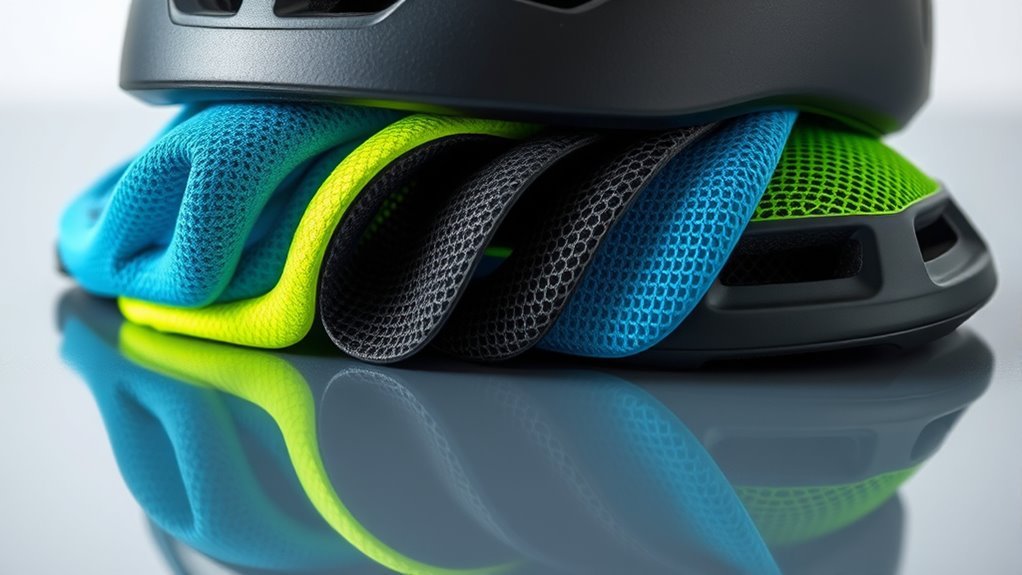
Helmet padding materials vary considerably, each offering unique benefits and levels of protection for e-bike riders. Common foam types include expanded polystyrene (EPS) and EPP, known for their lightweight properties and ability to absorb impact energy. These foams compress upon impact, providing critical cushioning. Alternatively, gel inserts can enhance comfort and fit, distributing pressure more evenly across your head. They provide a softer feel while maintaining protective qualities. Some helmets combine both foam types and gel inserts, optimizing safety and comfort. Choosing the right padding material is essential for ensuring a secure, comfortable ride, allowing you to enjoy the freedom of e-biking without compromising on safety. Prioritize materials that align with your riding style and preferences.
Benefits of Customizable Helmet Padding
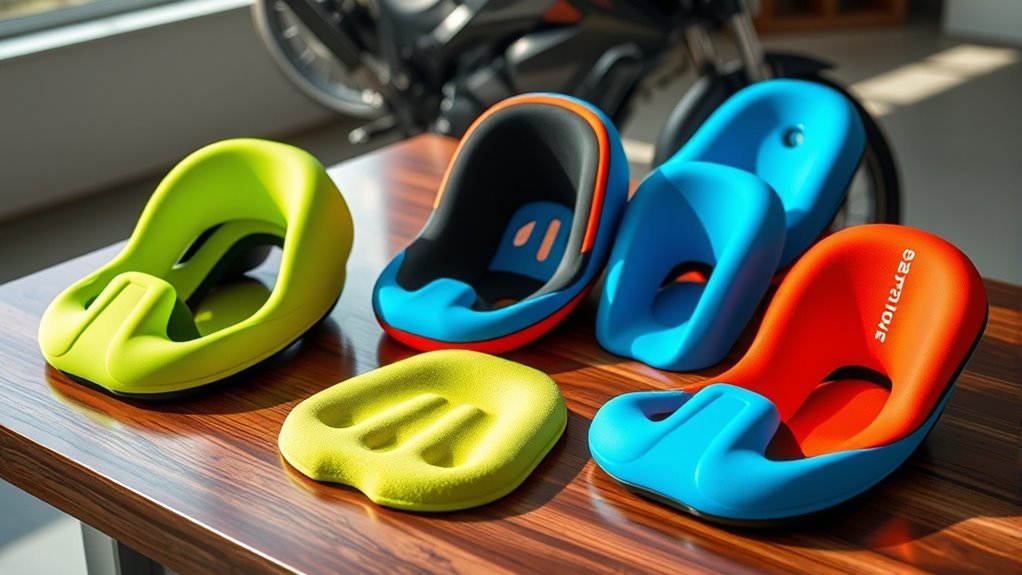
Customizable helmet padding offers a tailored fit that enhances both comfort and safety for e-bike riders. With adjustable padding options, you can achieve a custom fit that aligns perfectly with your head shape. This not only minimizes movement during rides but also reduces the risk of injury in case of impact. Comfort enhancement is another significant benefit; personalized padding materials can absorb sweat and regulate temperature, making every ride enjoyable.
| Benefit | Description |
|---|---|
| Custom Fit | Adjusts to your unique head shape |
| Comfort Enhancement | Materials that wick away moisture |
| Safety Improvement | Reduces movement, minimizing injury risk |
Embrace the freedom of the road, knowing your helmet works with you, not against you.
How to Choose the Right Padding for Your Helmet
How can you guarantee that your helmet padding offers the best fit and protection? Choosing the right padding involves a few key considerations.
- Padding Thickness: Thicker padding can provide more comfort but may compromise fit.
- Fit Adjustment: Look for helmets with adjustable pads to secure a snug fit, reducing movement during rides.
- Material Quality: Opt for high-quality, moisture-wicking materials that enhance comfort and breathability.
- Compatibility: Verify the padding is compatible with your helmet’s design, allowing for proper installation and effectiveness.
Maintenance and Care for Helmet Padding
Proper maintenance and care of your helmet padding can greatly extend its lifespan and enhance your riding experience. To guarantee effective padding cleaning, remove the padding components according to the manufacturer’s instructions. Hand wash them with mild soap and warm water, avoiding harsh chemicals that could degrade the material. Rinse thoroughly and allow them to air dry completely before reattaching.
For odor prevention, consider using baking soda or specialized helmet deodorizing sprays after rides. Regularly inspect the padding for wear and tear, replacing it when necessary to maintain safety and comfort. By following these simple steps, you’ll keep your helmet padding in top condition, guaranteeing a fresh and enjoyable ride every time you hit the road.
Innovations in Helmet Padding Technology
As technology advances, helmet padding has seen significant innovations designed to enhance safety and comfort for e-bike riders. Here are some key developments in helmet padding technology:
- Smart Padding: This adaptive material adjusts its firmness based on the level of impact, providing both comfort and protection.
- Enhanced Impact Absorption: New foam composites are engineered to disperse energy more effectively, reducing the risk of injury during falls.
- Lightweight Materials: Advanced polymers offer excellent protection without adding bulk, giving you a more streamlined experience.
- Custom Fit Systems: Innovative designs allow for personalized adjustments, ensuring your helmet feels secure and comfortable.
These cutting-edge features not only elevate safety standards but also cater to your desire for freedom while riding.
Frequently Asked Questions
Can I Use Helmet Padding From Other Sports Helmets?
Using helmet padding from other sports helmets isn’t advisable. While it might seem like a simple solution, compatibility concerns arise due to differing padding materials and construction. Each helmet is designed with specific safety standards in mind, and mixing components can compromise protection. It’s essential to stick with padding designed expressly for your helmet type to guarantee ideal safety and comfort while you enjoy your ride. Your head deserves nothing less than perfection!
How Often Should I Replace Helmet Padding?
You should replace helmet padding every 1 to 3 years, depending on usage and wear. Regularly inspect it for signs of degradation, such as tears or loss of cushioning. Following proper helmet maintenance tips can extend its lifespan; keep it clean and dry, and store it away from extreme temperatures. By staying proactive about padding replacement frequency, you guarantee ideal protection and comfort during your rides, enhancing your freedom to explore safely.
Is Helmet Padding Allergy-Friendly?
Yes, helmet padding can be allergy-friendly if it’s made from hypoallergenic materials. These materials are designed to reduce allergy symptoms, making your ride more comfortable. When choosing a helmet, look for brands that specifically mention hypoallergenic padding. This is essential, especially if you’re prone to sensitivities. Ensuring your helmet’s padding is allergy-friendly lets you enjoy the freedom of riding without the worry of discomfort or irritation.
What Is the Average Lifespan of Helmet Padding?
The average lifespan of helmet padding is typically 2 to 5 years, depending on the padding materials and how often you use your helmet. While some materials offer high comfort levels, they might wear out faster. In contrast, durable options can last longer but may compromise comfort. It’s essential to inspect your padding regularly; if you notice deterioration or reduced comfort, it’s time to replace it to guarantee your safety and enjoyment on the road.
Can I Wash Helmet Padding in a Washing Machine?
You shouldn’t wash helmet padding in a washing machine. Most padding materials, like foam, can degrade or lose shape during machine washing. Instead, use gentle hand washing techniques with mild soap and water. This method preserves the integrity of the padding while effectively removing dirt and odors. Always check the manufacturer’s guidelines before cleaning to guarantee your helmet remains safe and functional for your rides, allowing you the freedom to explore confidently.
